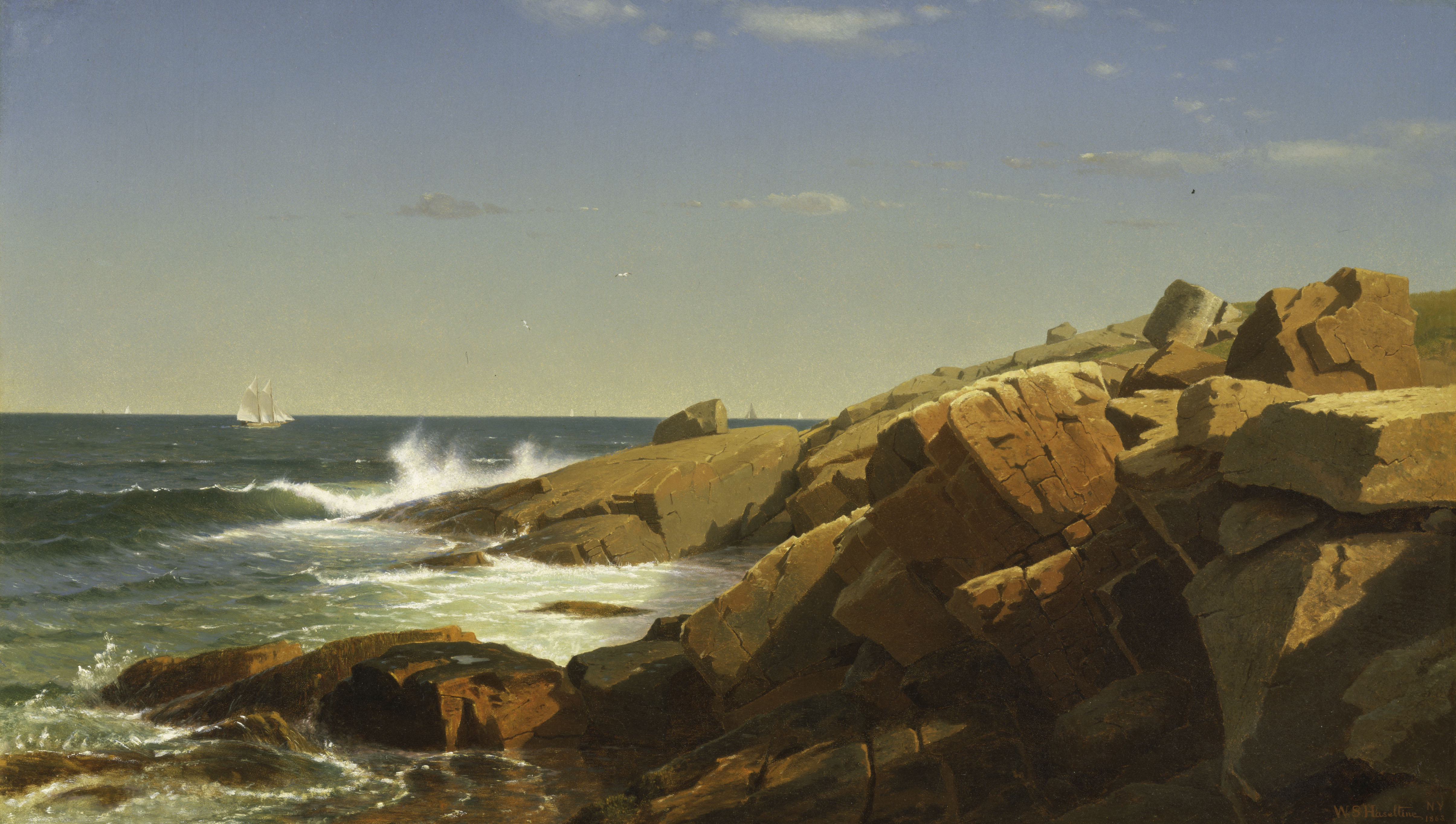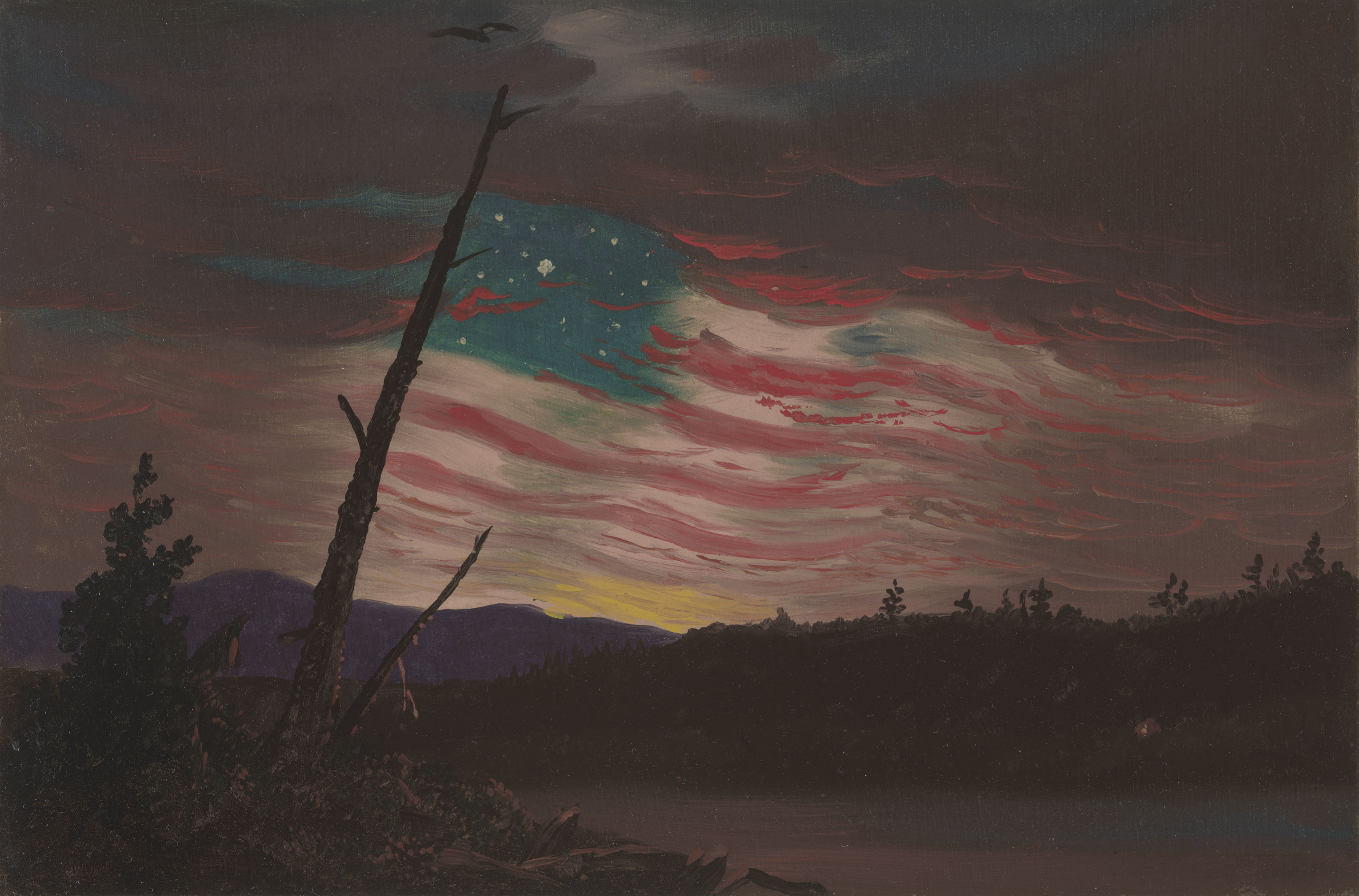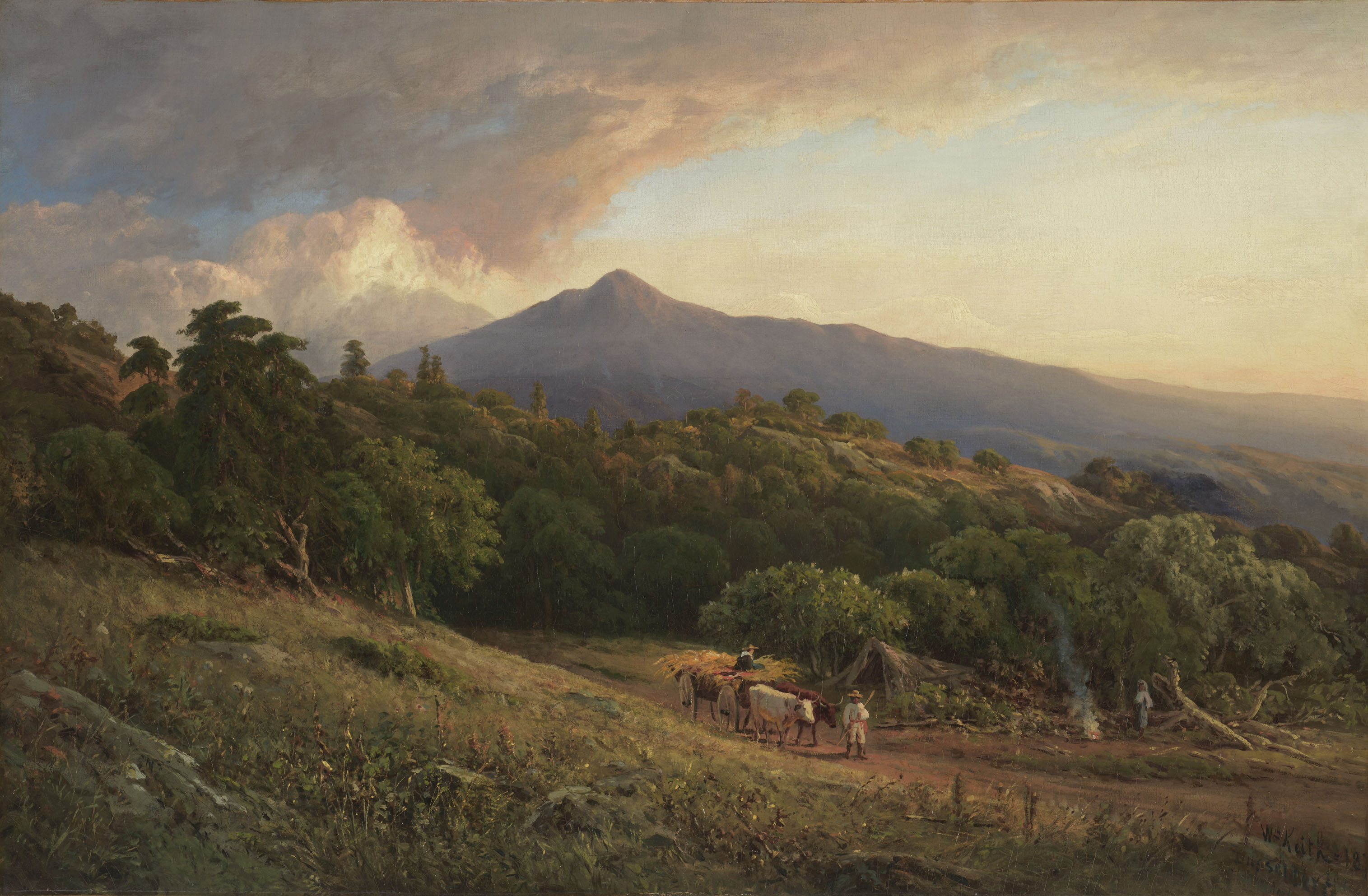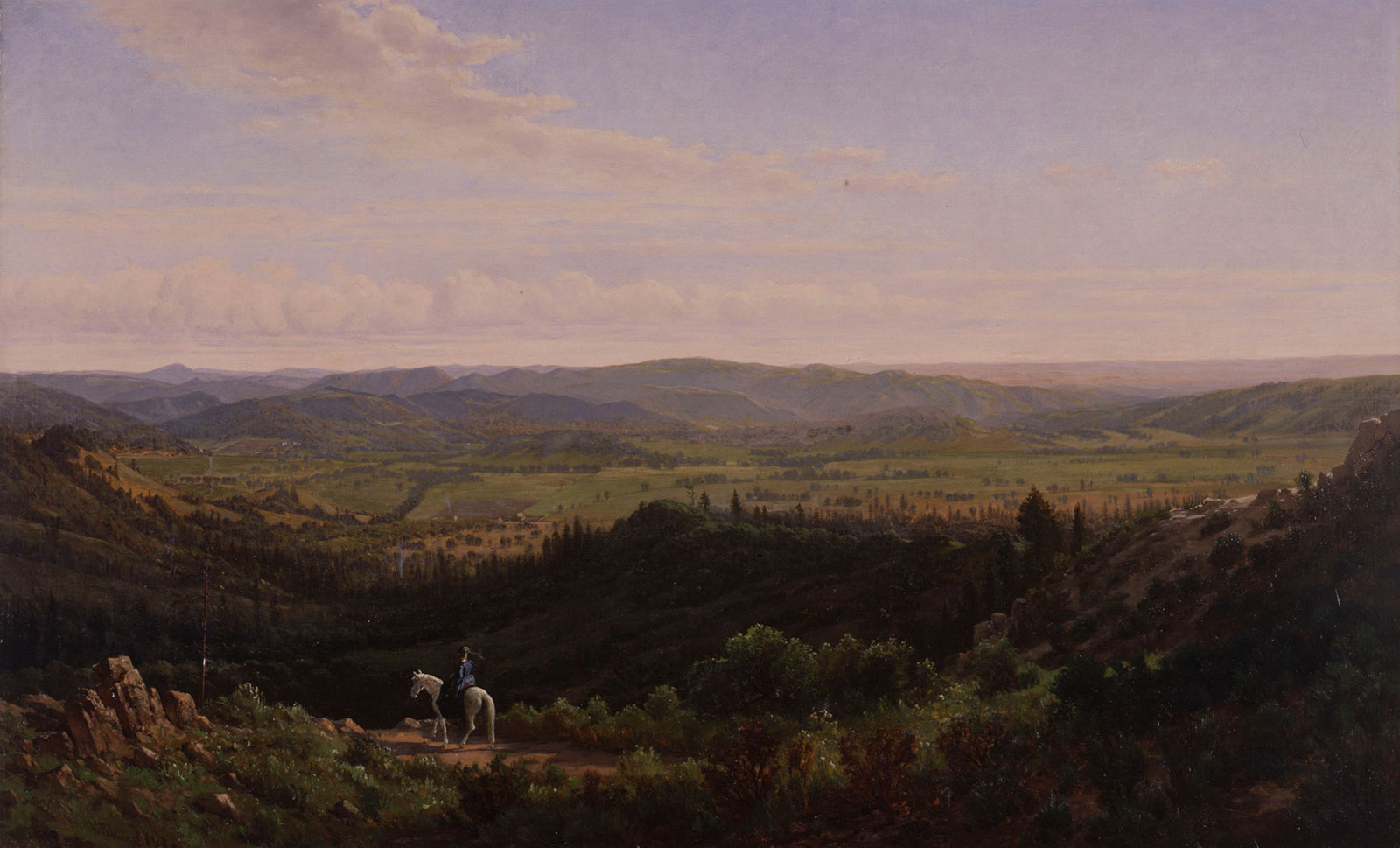Indian Rock, Narragansett, Rhode Island

What would you hear, smell, and feel from this location?

What would you hear, smell, and feel from this location?

What would you hear, smell, and feel from this location?

What do trees symbolize in your life?

What do trees symbolize in your life?

What is the difference between patriotism and propaganda?
This painting, based on an earlier oil sketch by Church, was inspired by the first military engagement of the American Civil War—the bombardment and capture of Fort Sumter, South Carolina, by Southern forces in April 1861. Fort Sumter’s battle-scarred American flag quickly became an important propaganda symbol for Union army recruitment. Here, Church symbolically resurrected the flag over the Northern landscape that served as the favored subject of the Hudson River School artists.

What makes a landscape memorable?
Mountain scenery was a subject popular with both European and American artists. Keith here depicted Mount Tamalpais, in Marin County, north of San Francisco. When this painting was exhibited in New York, a reviewer for a San Francisco newspaper favorably described the landscape as demonstrating “entire unpretentiousness, freedom from affectation and from strange and startling effects.”

What makes a landscape memorable?
Mountain scenery was a subject popular with both European and American artists. Keith here depicted Mount Tamalpais, in Marin County, north of San Francisco. When this painting was exhibited in New York, a reviewer for a San Francisco newspaper favorably described the landscape as demonstrating “entire unpretentiousness, freedom from affectation and from strange and startling effects.”

What emotions does this landscape evoke for you?
Williams and his wife, Dora, owned a small ranch on the Knights Valley side of Mount Saint Helena. The couple hosted artistic and literary visitors at the ranch, including the painters Thomas Hill and William Keith, as well as the writer Robert Louis Stevenson. This view from Ida Clayton Road, near the ranch, is relatively rare for the 19th century—Williams was uniquely positioned to paint the area with intimate familiarity.

What emotions does this landscape evoke for you?
Williams and his wife, Dora, owned a small ranch on the Knights Valley side of Mount Saint Helena. The couple hosted artistic and literary visitors at the ranch, including the painters Thomas Hill and William Keith, as well as the writer Robert Louis Stevenson. This view from Ida Clayton Road, near the ranch, is relatively rare for the 19th century—Williams was uniquely positioned to paint the area with intimate familiarity.

How can art heal?
Bierstadt‘s first wife, Rosalie, suffered from tuberculosis. Treatment consisted of rest and a warm climate, and Nassau, capital of the Bahamas, had both. Rosalie went there in 1877, and her husband visited as often as possible between his various painting trips. This scene was done during one of his visits. Bierstadt probably did most of the work on the spot, laying the brilliant blues and greens of the ocean with long strokes and dabbing in the sandy foreground with quick touches.